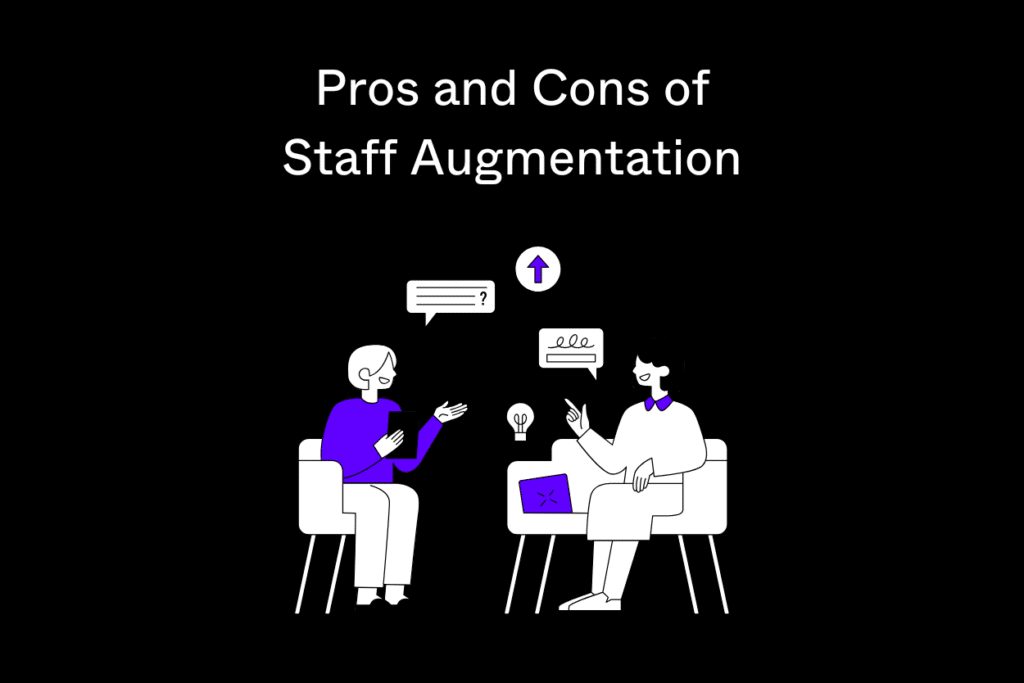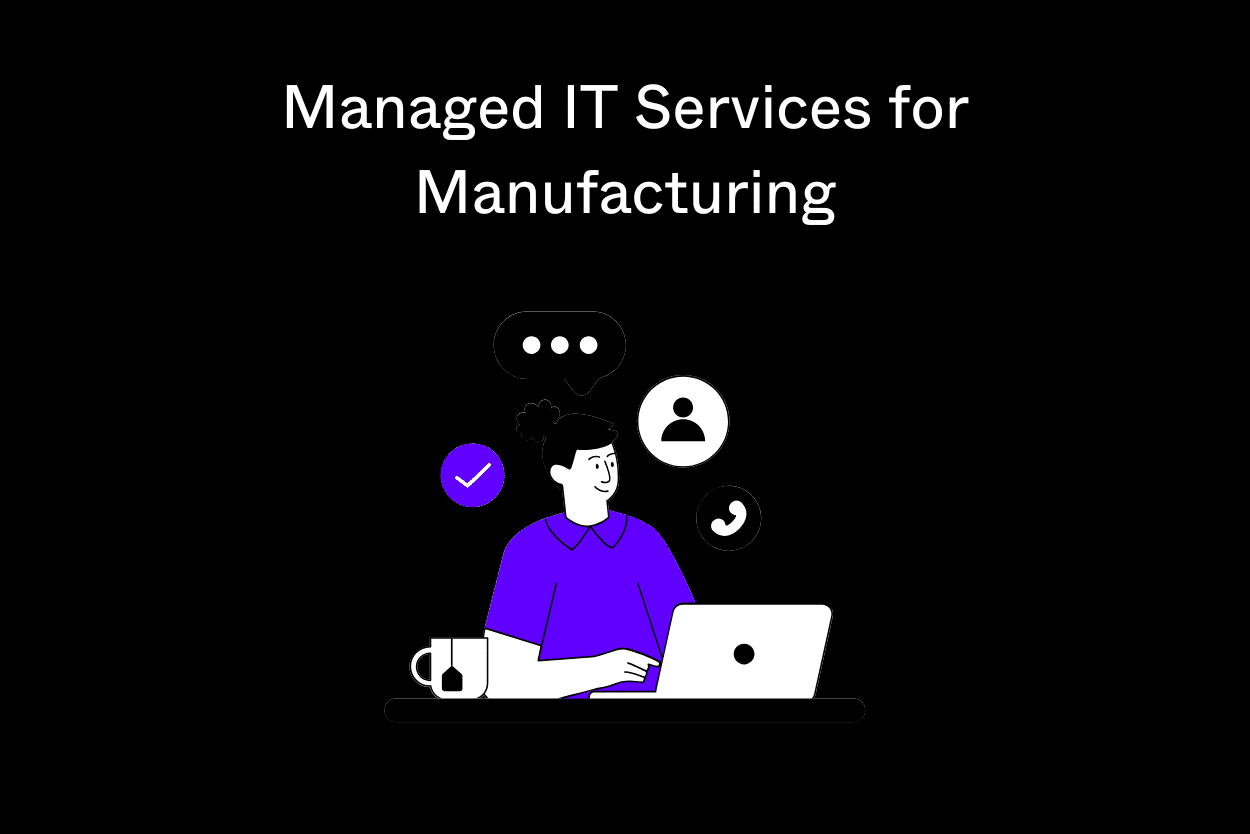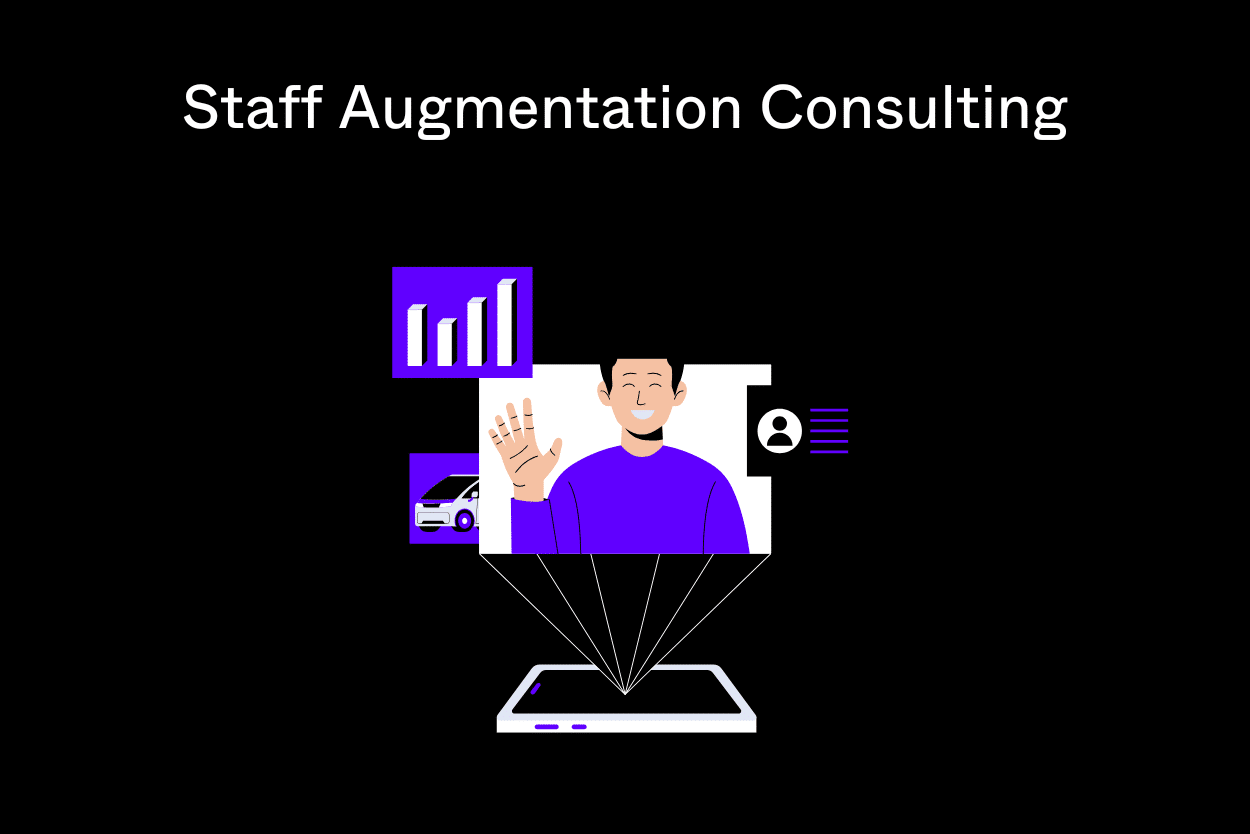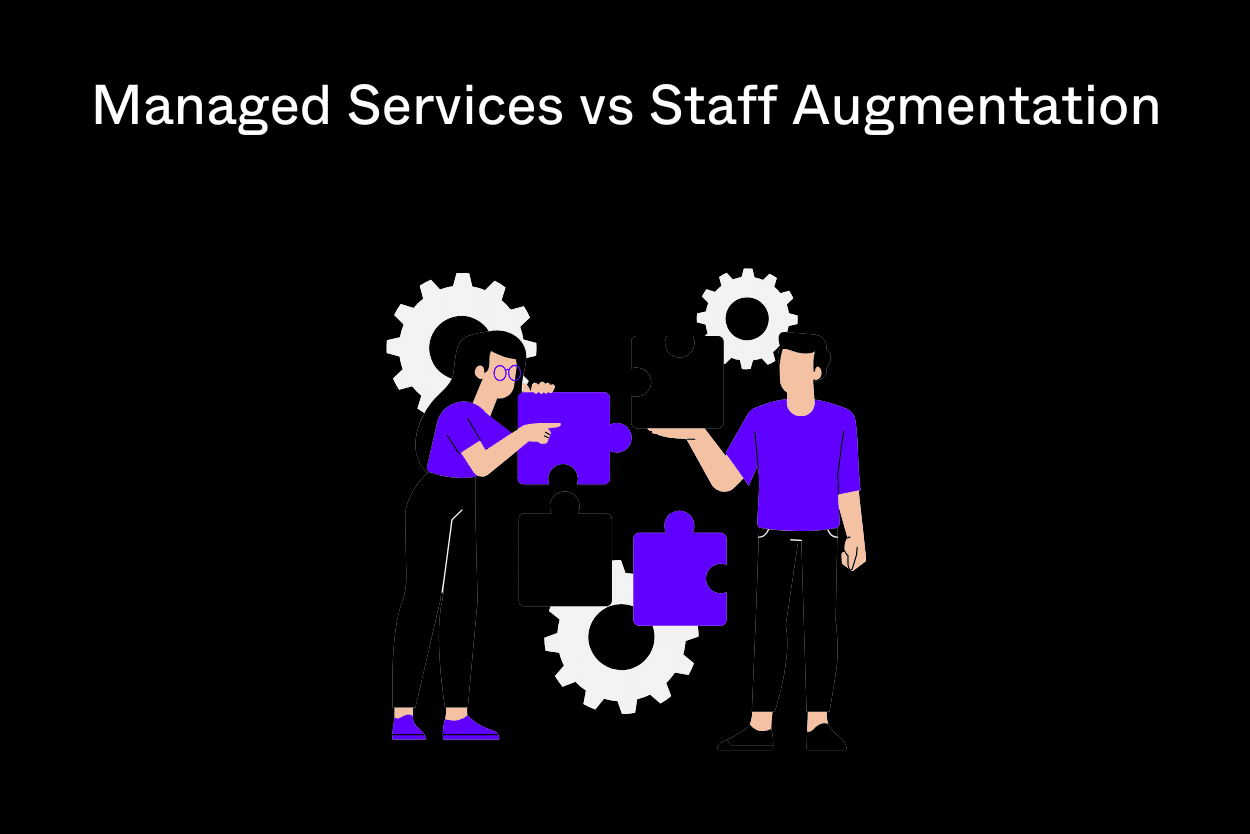
Flexibility and agility are much more important today in the fast-changing business environment. Staff augmentation is a strategic model that enables businesses to adapt to market demands and technological changes effectively.
The global IT staff augmentation and managed services market is expected to grow at a compound annual growth rate (CAGR) of about 13.7% from 2023 to 2032.
This model lets companies enhance their capabilities without long-term overhead due to permanent hires. In this detailed guide, we will take you through what staff augmentation is, pros and cons of staff augmentation, how it works, the benefits and drawbacks, and best practices for its effective implementation.
What is Staff Augmentation?
Staff augmentation is a flexible form of outsourcing applied by companies in staffing projects and responding to business objectives quickly. This helps companies add the appropriate skilled personnel needed for their teams to support their initiatives without having to burden themselves with a full-time workforce.
How Staff Augmentation Works in Today’s Business Landscape
Staff augmentation fits perfectly in the modern business landscape, as the need for agility and special skills can be highly volatile. Businesses can hire staff for short-term or long-term projects and change their workforce depending on the shifting needs of the project and changing market conditions. This flexibility will help a company maintain its competitive edge by tapping into external expertise when needed.
Pros and Cons of Staff Augmentation
Staff augmentation is a flexible workforce strategy that has both pros and cons depending on organizational needs and contexts. Here’s a breakdown of the Pros and Cons of Staff Augmentation:
Pros
| Pros | Explanation |
| Special Skills | Access to experts with specific skills not available in-house. |
| Flexible Team Size | Ability to quickly adjust team size based on project needs. |
| Saves Money | More cost-effective than hiring full-timers for short-term. |
| Speeds Up Work | Accelerates project completion and helps meet deadlines. |
| Less Hiring Risk | Reduced risk in hiring due to staffing firm’s vetting process. |
1. Access to Specialized Skills:
This kind of staff augmentation helps a company get hold of certain specialized, high-level skills not in-house, which are often useful for projects requiring such special knowledge or expertise.
2. Flexibility and Scalability:
This model gives a possibility to scale up or down depending on project requirements without long-term commitments, such as those created by permanent hiring. This is quite helpful for those industries whose workloads have peak and off-peak times.
3. Cost-Effective:
Compared to hiring full-time employees, staff augmentation can be cost-effective since it does not have long-term salary commitments and the benefits associated with permanent staff.
4. Reduced Time to Market:
Bringing in augmented staff accelerates project timelines, allowing companies to meet deadlines and remain competitive in fast markets.
5. Mitigation of Recruitment and Operational Risks:
The use of augmented staff will help reduce the burden on the human resources of the companies as the recruitment and administrative processes are usually handled by the staffing agencies.
Cons
| Cons | Explanation |
| Fitting In | Augmented staff may have difficulty integrating with existing teams. |
| Reliance on Others | Dependence on a staffing agency for crucial team members. |
| Extra Management | Increased complexity in managing a blended workforce. |
| Can Get Expensive | Long-term use of augmented staff can become costly. |
| Privacy Concerns | Potential security risks with external staff accessing sensitive information. |
1. Integration Challenges:
Augmented staff may find it challenging to blend into the existing corporate cultures and workflows, which will impact team dynamics and project efficiency.
2. Dependence on External Providers:
Sometimes, this may lead to problems with the quality control of the professionals supplied and the reliability of the providers.
3. Management Complexity:
Managing a mixed workforce of internal and external employees creates additional complexity, requiring effective communication strategies and management skills to ensure alignment and productivity.
4. Potential for Higher Long-Term Costs:
Staff augmentation may be cheap for short-term projects, but it can get expensive if done for long periods.If the outside staff have very high hourly rates, then it gets very expensive.
5. Security and Confidentiality Risks:
The risk of security and confidentiality increases as outside personnel enter sensitive or proprietary projects, making it necessary to have strong data protection and compliance measures in place.
Types of Staff Augmentation
Staff augmentation can be categorized into several types based on the duration of the engagement and the specific needs of the project. Here’s a breakdown of the common types of staff augmentation:
1. Short-Term Augmentation
- Purpose:
- Used for immediate and temporary project needs, such as covering for employee absences or adding extra hands for project deadlines.
- Duration:
- Typically lasts for a few weeks to a few months.
2. Long-Term Augmentation
- Purpose:
- Good for long projects where the requirement is specialized for a longer time period.
- Duration:
- It can take anywhere from months to a few years.
3. Specialized Augmentation
- Purpose:
- In case of an extremely specialized need that the existing team does not possess, such as niche technology requirements.
- Duration:
- Project-dependent; however, this is generally a project-based activity.
4. Project-Based Augmentation
- Purpose:
- This is especially for one project that has defined starting and ending dates.
- Duration:
- Directly tied to project timeline, that is, stops once the project is done.
5. Commodity Augmentation
- Purpose:
- Augmentation for commoditized skills whose scarcity or uniqueness is not relevant, such as basic administrative tasks or simple coding work.
- Duration:
- Is flexible and workload-driven rather than project-driven time.
When to Consider Staff Augmentation
Staff augmentation can be a valuable strategy when an organization needs to scale up its workforce temporarily without the long-term commitment of hiring full-time employees. It is especially useful during periods of rapid growth, project-specific demands, or when specialized skills are required that are not present within the current team.
Companies might also consider staff augmentation to fill gaps caused by seasonal fluctuations, employee leave absences, or to accelerate development cycles that require niche expertise. This approach offers flexibility and cost-efficiency, allowing businesses to adapt quickly to market changes and project requirements while maintaining control over the work process.
Improve Your Team Effectively with Staff Augmentation
Staff augmentation can dramatically enhance your team’s effectiveness by providing:
- Tailor-made skills and expertise to the specific project requirement.
- Saves bandwidth for existing employees focused on core business areas.
- Strategic flexibility to pursue new initiatives without overburdening the present staff.
How to Implement Staff Augmentation
1. Identify Needs
Assess Skills Gaps: Evaluate your current team to find out which skills or expertise are lacking.
Define Project Requirements: Clearly document the scope and objectives of your project.
2. Choose the Right Vendor
Research Providers: Look for firms who have experience in your industry
Evaluate Expertise: Evaluate their credentials and past performance.
3. Set Clear Expectations
Define Roles: Specify roles and responsibilities for the augmented staff
Establish Metrics: Set measurable goals to track how they are doing.
4. Integrate Staff
Onboarding: Train the augmented staff on the way your company works and the culture of the company.
Communication: Develop regular updates and paths for feedback.
5. Monitor and Adjust
Regular Reviews: Regular reviews Evaluate the contribution of the augmented staff to the project.
Feedback: Provide and solicit feedback for improvement.
6. Manage Compliance
Data Security: Acting in accordance with legal and security protocols.
Contractual Compliance: Ensuring to act within contractual terms.
7. Plan for Disengagement
Transition Strategy: Get prepared to hand over the project to your team.
Knowledge Transfer: Ensure that all the key learnings are passed on to your internal team.
Best Practices for Staff Augmentation
Achieving maximum benefits of staff augmentation requires businesses to implement the following best practices:
- Facilitate open and clear lines of communication involving internal teams as well as the augmented workforce.
- Streamline onboarding processes to better integrate augmented staff within work teams.
- Hold proper performance reviews for augmented staff in order to check whether it fits into project objectives. They should also meet the company standards.
Conclusion
Staff augmentation is a very powerful strategy that can help businesses navigate the complexities of the modern market. By understanding Pros and Cons of Staff Augmentation, companies can leverage this model to enhance their operational flexibility, access specialized skills, and maintain competitive advantage. As businesses continue to evolve, staff augmentation will remain a vital tool in the arsenal of strategic business planning.
This guide provides a foundational understanding of staff augmentation, offering insights into when and how to apply this strategy effectively to meet your business objectives.



